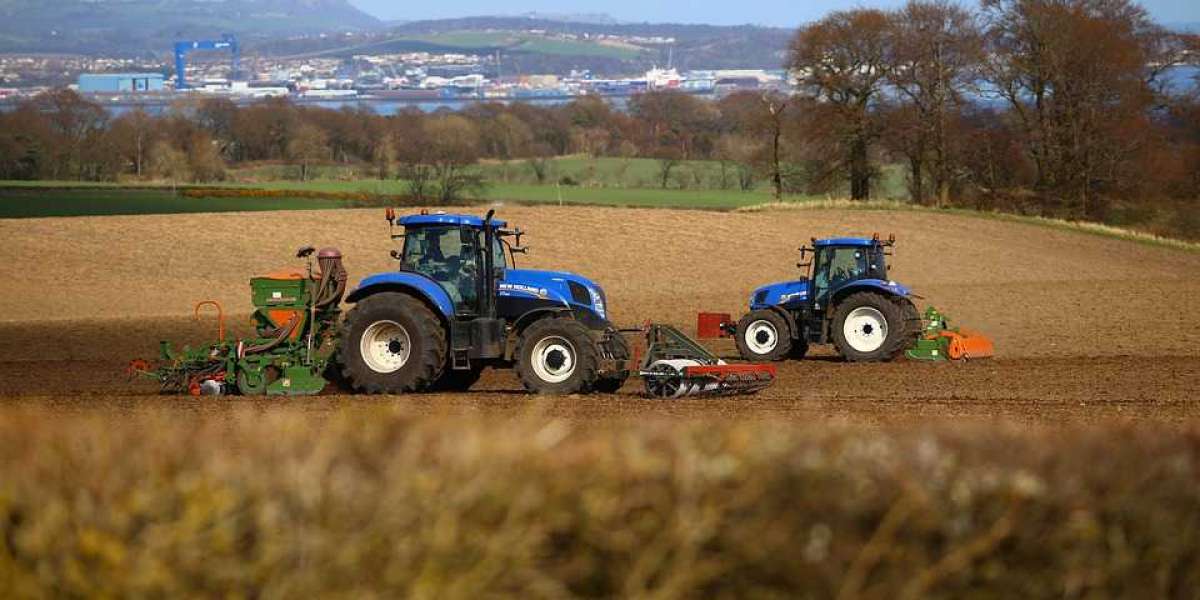A Seed Drill is tractor-powered equipment that is attached to the PTO shaft of the tractor. The Seed Drill makes it easier for farmers to crop seeds and sow. The tractor-mounted Seed drill machines are small and simple to operate. A seed drill machine is a piece of farm equipment that sows crop seeds evenly in the soil by measuring out the place and covering them to a fixed average depth. At the end of the processing and depths to provide soil coverage and protection from pests and birds, the seeds are germinated using a seed drill.
Before the invention of seed drills, farmers sowed seeds by hand. Manually distributed seeds were frequently planted incorrectly, resulting in a poor rate of output. The use of a seed drill considerably increases crop yield ratio. Some seed-metering drill machines are also known as planters. The concept is to create a mechanism that takes seeds from a bin and places them in a tube. Furthermore, these disc seed drills help with fertiliser application to crops.
Top Companies
- Landforce
- Khedut Seed Drill
- Dharti Seed Drill
- Maschio Gaspardo Seed Drill Nina
- John Deere Seed Driller
- Sonalika Seed Driller
- Kartar Seed Drill
- Shaktiman Seed Drill
- Vishavkarma Seed Drill
Seed Drill Benefits -
A seed drill is a device used in agriculture to sow seeds uniformly and at a specific depth. The benefits of using a seed drill include:
- Consistent and uniform sowing: The seed drill ensures that seeds are sown at the same depth and spacing, resulting in consistent and uniform growth of crops.
- Reduced seed wastage: With precise sowing, the seed drill reduces seed wastage, as it ensures that seeds are planted in the correct position and at the correct depth.
- Improved crop yield: The uniform sowing of seeds with a seed drill results in improved crop yield, as the plants have enough space to grow and access to sufficient nutrients.
- Time-saving: Using a seed drill saves time and labor compared to manual sowing methods, which can be time-consuming and inconsistent.
- Better soil conservation: Seed drills can be used to sow seeds directly into the soil, reducing soil erosion and preserving the soil structure.
Use of seed drill
Overall, the use of a seed drill in agriculture can result in higher crop yields, better soil conservation, and more efficient use of resources.
- The seed drill's purpose is to automate the spreading of agricultural crop seeds. A seed drill is made up of a seedbox with seeds inside and tubes connected to it that may be positioned at various distances to provide the plants with the optimum growing environment possible.
- Farmers can use the seed drill to plant seeds at specific intervals and depths in rows. Each tube connecting to the seed boxes drills a hole at the appropriate depth, inserts one or more seeds, and then covers the hole. It enables farmers to plant seeds with much greater precision and cover them with dirt without having to walk back.
- A seed drill generates considerably more regular crops that are frequently planted in rows than manually planting seeds.
Get information about tractor prices, tractor videos, tractor games and So on from khetigaadi.com.


